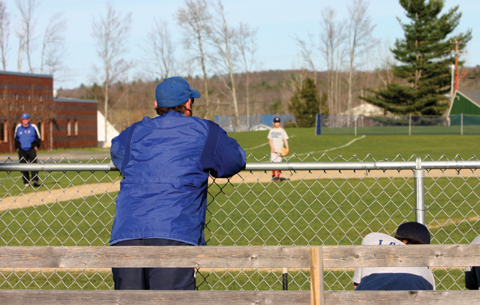Cataract surgery no longer means simply removing the cataract. It now encompasses achieving a desired refractive endpoint as well. This fusion of cataract and refractive surgery has been both a blessing and a curse. Patients benefit from the ability to have their refractive status considered in the overall surgical approach, but the degree of difficulty is now higher for surgeons and comanaging optometrists alike. We must walk a fine line between enthusiasm and skepticism in our patient education and workup so that results match expectations.
Fortunately, in contrast to just a decade ago, today’s advances allow us to better match a patient’s needs with the best-suited intraocular lens (IOL), as myriad options now exist to achieve a variety of visual ends for cataract patients. Modern options include toric IOLs for astigmatism and several options for presbyopia correction (accommodative, diffractive and extended depth-of-focus lenses). While all presbyopic options suffer from some degree of compromise, from inadequate near vision correction to glare and halos at night, a properly educated and well-selected patient can achieve success and satisfaction.
When evaluating and educating the preoperative cataract patient, clinicians must consider several factors when discussing a premium intraocular lens. Patients should have a clear cornea and stable ocular surface along with a stable macula when considering a diffractive lens. Toric lenses and accommodating IOLs are more forgiving and can be implanted in patients with macular changes.
Beyond the clinical findings, all cataract surgery patients come with a set of visual needs dictated by their uniqueness as a person. It is the optometrist’s responsibility to help guide the patient in the IOL selection process and identify which compromises the patient can tolerate. To illustrate this, let’s walk through the IOL selection process using several case examples. Bear in mind that there’s no single “right answer” for these patients; the discussions below reflect my own approach and assessment, but other doctors could arrive at different solutions.
 |
| Bob, a retired teacher who coaches baseball, gained 20/20 vision following toric lens implantation. |
Eyeing the Ball
Bob is a 72-year-old retired teacher who coaches baseball. His chief complaint was his inability to see the player’s numbers when attending baseball games at night. In addition, he reported his driving vision has gotten much worse over the past year.
The readout. His best-corrected vision was 20/40 in each eye. His intraocular pressures (IOPs) were 13mm Hg and 15mm Hg in the right and left eyes, respectively. His osmolarity was 302mOSm/L and 304mOSm/L in the right and left eyes, respectively, with an unremarkable posterior segment and 2+ to 3+ nuclear sclerotic cataracts in both eyes. His refractive error was +2.50-1.25x005 OD and +1.75-1.50x178 OS. Simulated keratometry (sim Ks) revealed 41.50@08 and 43.50@83A OD and 41.75@173 and 43.00@98 OS. Screening OCT of the macula was unremarkable. At the visit, he had no significant health issues and was not taking any medications.
I educated Bob that some of the presbyopia-correcting lenses may increase glare and halos at night, which may be particularly problematic for coaching night games. Since he preferred to have the best night vision possible, I recommended a toric IOL for Bob, which would correct his corneal astigmatism and, when combined with intraoperative aberrometry, the lens could be inserted and rotated more precisely.
When choosing the right lens, practitioners should evaluate the corneal astigmatism, not just the refractive astigmatism. One study shows the Acrysof toric (Alcon) rotates on average 3.8 degrees.1 In another study of more than 6,000 eyes implanted with toric IOLs, researchers found the lenses were only repositioned 0.653% of the time. In the rare instance of repositioning, it should occur one week after the initial procedure.1
The toric IOL was implanted using the Ora system (Alcon), which determines the refractive state of the eye using Talbot-Moire interferometry at the aphakic point during cataract surgery. This allows for precise lens selection and improved refractive outcomes. This technology is useful in post-refractive surgery patients and with toric IOLs and can improve the refractive outcome of cataract surgery patients.2
Bob’s postoperative course was uneventful and his uncorrected visual acuity (UCVA) was 20/20- OD and 20/20 OS at the three-month visit for the second eye.
 |
| Tina, an avid hiker, was satisfied with the Symfony IOL, more so after both eyes received the lens. |
Scaling the Peaks
Tina is a 68-year-old retired market researcher who now enjoys hiking. Her chief complaint was progressive decrease in vision, worse in the right eye. It affected both her indoor and outdoor activities.
The readout. Her best-corrected visual acuities were 20/50 and 20/30 in the right and left eyes, respectively, with a manifest refraction of -4.50-1.75x12 OD and -3.75-0.75x163 OS. Her IOPs were 17mm Hg in each eye and osmolarity measurements were OD 298mOSm/L OD and 301mOSm/L OS. Sim Ks revealed -2.25@13 and -1.00@165 in the right and left eyes, respectively. Slit lamp evaluation showed 2+ nuclear sclerotic cataracts in both eyes and a 2+ cortical cataract in the right. A screening OCT was normal, and the posterior segment was unremarkable. At the time of the examination, she was taking atorvastatin for high cholesterol.
When I told Tina the lenses implanted to correct distance and near will cause glare at night, she indicated that she already experiences significant glare and rarely has a need to drive at night. For Tina, having some glare at night was acceptable, and she felt the trade-off of gaining usable near vision was worth having some extra glare at night. Thus, I recommended the Tecnis Symfony toric IOL (AMO) for her. The lens is suitable to expand the depth of focus, which may help with intermediate and near vision, according to the company.3,4
Both of Tina’s eyes had the Technis Symfony lens implanted four weeks apart. Prior to the second surgery, her UCVA was 20/25 in the OD and J4 at near with a concern for poor quality vision. This is a typical concern between surgeries, and we notice these patients have greater satisfaction after both eyes are treated. At the three-month visit her UCVA was 20/20 OU, 20/25 OD 20/25 OS at distance and J2 OU at near. She said she was very happy with the outcome.
 |
| Rita, a dry eye patient with macular changes, received an aspheric monofocal IOL to achieve clearer vision—ideal for playing card games on a computer or tablet. |
Keeping a Poker Face
Rita is a 78-year-old female who enjoys playing card games on her computer. She has not driven at night for years and mentioned she rarely wears her glasses.
The readout. Her best-corrected vision was 20/50 and 20/70 in the right and left eyes, respectively, at distance and J1 in the right eye and J2- in the left. She had a manifest refraction of -1.50 and -1.75 in the right and left eyes, respectively, which has not changed in several years. Her IOPs were 12mm Hg and 14mm Hg in the right and left eyes, respectively, and osmolarities were 318mOSm/L and 301mOSm/L.
Anterior segment evaluation revealed a decreased tear lake and minimal secretion from her meibomian glands, along with 2+ nuclear sclerosis and 2+ brunescence in each eye. The posterior segment examination revealed rare fine drusen in the right eye and 1+ drusen without pigment change in the left. OCT of the macula confirmed a diagnosis of age-related macular degeneration in each eye, which was more significant in the left. As of the examination, she was taking an AREDS2 formula vitamin and blood pressure medication.
The frequency at which patients such as Rita wear their glasses is important to the IOL selection decision. Practitioners should ask specific questions about spectacle use, such as if they wear them for close indoor work or distant outdoor activities. In this case, the patient preferred to not wear glasses for her near work.
Rita has two factors that work against vision quality—her dry eye and her macular changes. Therefore, a diffractive lens was not the best solution for achieving sufficient levels of quality near vision because of the compromises inherent in a surgical approach that relies on light-splitting optics. Her ocular surface was treated prior to surgery with hot compress at night and cyclosporine 0.005% BID, which allowed for repeatable A-scans. Ultimately, she was treated with an aspheric monofocal IOL and a target of -1.50D in each eye. I discussed correcting both eyes for distance and stressed that, with both eyes corrected for distance, she would need glasses to see her computer. However, Rita was very happy with the current optics of her eyes, but just wanted it clearer. I did not discuss monovision because of her age and because she had never used it prior.
Rita had successful cataract surgery in both eyes. Her UCVA was 20/50 in each eye with a manifest refraction of -1.25 OD and -1.50 OS at her three-month visit. She continued to use cyclosporine 0.005% BID OU and her osmolarity was 301mOSm/L and 306mOSm/L at that same visit.
 |
| With is new IOLs, Pedro now only rarely needs glasses for small print and is pleased with his computer vision without glasses. |
Staying in the C-Suite
Pedro is a 62-year-old retired executive who came to the clinic for a LASIK evaluation. He has worn daily disposable contact lenses in the past, with reading glasses for near work. Previously, he tried and failed at monovision; recently, his contact lenses had become increasingly uncomfortable, and he expressed an interest in refractive surgical correction.
The readout. Pedro’s manifest refraction was +5.50-0.50x90 and 20/20 OD and +5.00-0.25x87 and 20/25 OS. His sim Ks were 45.00x44.75@90 OD and 45.25x45.00@85 OS, and osmolarity measurements were 302mOSm/L and 298mOSm/L in the right and left eyes, respectively. Anterior segment evaluation revealed trace nuclear sclerosis in each eye, and the left eye was slightly more brunescent.
Pedro was not a good candidate for laser vision correction. His high hyperopia and steep Ks decreased the likelihood of achieving a satisfactory result. A hyperopic LASIK surgery would result in steepening the cornea to over 50D. Our surgeon has an upper limit of 47D for hyperopic treatments secondary to his experience with poor optical outcomes above that level. The severity of his crystalline lens change was not significant enough for insurance to cover cataract surgery, but removing his lens electively was an option to consider. Pedro was happy to hear that having a clear lens extraction would provide stable vision and he would not develop cataracts later in life. As a working executive with the financial wherewithal to pay entirely out of pocket, clear lens extraction was a good option for him.
While he was comfortable wearing reading glasses, he loved the idea of being less dependent on them for near vision. He elected to have the Crystalens AO (Bausch + Lomb) lens implanted in each eye. This is a hinged lens designed to provide improved intermediate and some near vision by flexing forward during accommodation.5 Because the lens is not diffractive, it does not create glare at distance.5 Concerns exist that the effectiveness of the lens may diminish over time, but one study demonstrates stable accommodation for up to seven years after implantation.6
Pedro was targeted for -0.25D in each eye and his one-month manifest was -0.25D sphere OD and -0.50D sphere OS with 20/20- UCVA OU. Pedro was very pleased with his computer vision without glasses and found he only rarely needed them for small print.
 |
| With her new IOLs, Jamile can comfortably use her tablet while watching TV. |
Double Tech Trouble
Jamile is a 78-year-old female whose chief complaint was the inability to see the television, and who was becoming increasingly frustrated because she likes to use her iPad when watching television. She reported that she rarely drives.
The readout. Her best-corrected vision was 20/40 and 20/50 in the right and left eyes, respectively. Her IOPs were 16mm Hg OS and 15mm Hg in the right and left eyes, respectively. Her glaucoma has been controlled by latanoprost OU nightly for five years. Her anterior segment exam revealed slight dermatochalasis and 3+ nuclear sclerosis in both eyes. Posterior segment evaluation revealed slight optic nerve changes with cup-to-disc ratios of 0.4x0.5 in each eye. A screening OCT was normal, and the examination of the peripheral retina was unremarkable.
I educated Jamile on the risks and complications of diffractive lenses vs. monofocal lenses. She indicated she already experiences significant glare, and that she would prefer to prioritize the ability to switch between near and far vision without having to keep taking glasses on and off. I recommended a Restor 2.5D (Alcon) lens for her dominant eye, which was treated first. This is a diffractive lens with a 2.5D add power, allowing for a reading range of approximately 21 inches.
Prior to the surgery on her second (non-dominant) eye, Jamile asked about better near vision. We discussed the risks and benefits of putting a stronger lens in her second eye. She consented to having the Restor 3.0 lens put in her non-dominant eye. At Jamile’s one-month post-op visit to evaluate her second eye, her uncorrected distance vision was 20/25 and 20/20 in the right and left eyes, respectively, and her near vision was J2 in both eyes.
In our practice, we discontinue topical glaucoma drops prior to surgery, and they are not restarted until we observe an increase in IOP above the target. In Jamile’s case, her IOP remained at 15mm Hg in each eye without drops one year after surgery, and there was no change in her visual fields or OCT. Removing the crystalline lens may improve outflow through the trabecular meshwork, thus reducing the IOP. Of course, we will continue to monitor as if she was taking drops.
As important as the clinical findings are, so too are the lifestyle concerns and patient expectations. Satisfaction is largely dependent on how educated patients are about the compromises they will face, especially presbyopic patients. Usually, the optometrist has already fought the battle in discussing either progressive spectacle lenses or contact lenses. Appropriately selected patients can achieve spectacle independence with 20/happy vision with the current IOLs options.
Dr. Owen is the Director of Clinical Services for TLC Vision in San Diego, and a fellow of the American Academy of Optometry.
1. Holland E, Lane S, Horn JD, et al. The AcrySof Toric intraocular lens in subjects with cataracts and corneal astigmatism: a randomized, subject-masked, parallel-group, 1-year study. Ophthalmology. 2010;117(11):2104-11. |

